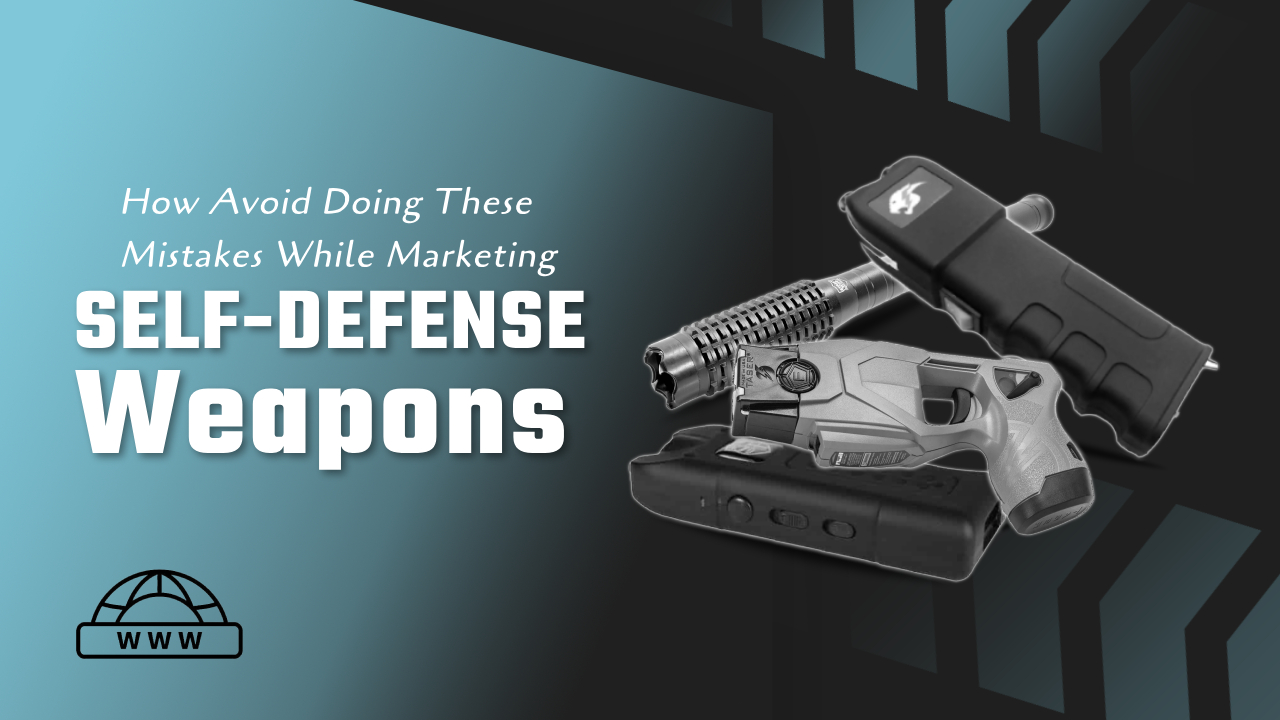Marketing self-defense weapons is a complex endeavor that requires a deep understanding of legal regulations, ethical considerations, and effective communication strategies. With a global audience in mind, this article aims to provide comprehensive insights into the common pitfalls and how to avoid them. Our goal is to ensure that your marketing efforts are not only successful but also compliant with all relevant guidelines and highly engaging for your target audience.
Key Highlights:
- Understand and comply with local laws and ethical considerations to ensure the responsible marketing of self-defense weapons.
- Tailor your communication strategies to your audience’s needs and leverage digital marketing channels effectively while avoiding misleading claims.
- Stay updated with industry trends and innovate continuously to maintain a competitive edge and build long-term customer trust.
What is Self-Defense Weapons?
Self-defense weapons are tools designed to help individuals protect themselves in potentially dangerous situations. These weapons can range from non-lethal devices to lethal ones, depending on the level of threat and the local laws governing their use. The primary goal of these tools is to deter or incapacitate an attacker long enough for the victim to escape and seek help.
Different Types of Self-Defense Weapons
- Stun Guns: Direct-contact devices delivering a high-voltage shock to incapacitate an attacker; effective but require close proximity and face legal restrictions.
- Tasers: Can be used from a distance to deliver a high-voltage shock; effective but legally restricted and typically offer limited shots.
- Pepper Spray: Non-lethal aerosol causing temporary blindness and discomfort; easy to carry and effective at a distance but can be wind-affected.
- Personal Alarms: Emit a loud noise to draw attention and scare off attackers; non-lethal and easy to carry but depend on nearby people for effectiveness.
- Batons and Kubotans: Compact tools for striking or pressure applications; effective in close combat but require some training.
Understanding the Legal Landscape
Research Local Laws and Regulations
Self-defense weapons are subject to various laws and regulations that differ significantly from one country to another. Before marketing these products, it’s crucial to:
- Understand Local Laws: Make sure you are fully aware of the legal status of self-defense weapons in each region you target. Some countries may have strict prohibitions or specific regulations regarding the sale, possession, and use of these items.
- Consult Legal Experts: To ensure compliance, consult with legal experts who specialize in weapons regulations. This will help you navigate the complexities and avoid potential legal issues.
Ethical Considerations
Promote Responsible Use
Marketing self-defense weapons comes with a responsibility to promote their safe and ethical use. Here are some key points to consider:
- Safety First: Emphasize the importance of using self-defense weapons responsibly and only in situations where there is a genuine threat.
- Educational Content: Provide educational materials on how to use these products safely and effectively. This could include instructional videos, articles, and infographics.
- Avoid Fear-Mongering: While it’s important to highlight the benefits of self-defense weapons, avoid using fear as a primary marketing tactic. This can create a negative perception and may lead to ethical concerns.
Effective Communication Strategies
Know Your Audience
Understanding your target audience is fundamental to crafting effective marketing messages. Consider the following:
- Demographics: Identify the age, gender, location, and other demographic factors of your ptoential customers.
- Psychographics: Understand their interests, lifestyles, and values. This will help you tailor your messaging to resonate with them.
- Needs and Concerns: Address the specific needs and concerns of your audience. For example, individuals living in high-crime areas may prioritize different features than those in safer regions.
Crafting the Right Message
Once you have a clear understanding of your audience, focus on crafting messages that are clear, concise, and compelling:
- Highlight Benefits: Clearly communicate the benefits of your products, such as ease of use, effectiveness, and legal compliance.
- Use Testimonials: Share testimonials and success stories from satisfied customers. This can build trust and credibility.
- Visual Content: Utilize high-quality images and videos to demonstrate your products. Visual content is more engaging and can effectively showcase features and benefits.
Leveraging Digital Marketing Channels
Social Media
Social media platforms are powerful tools for reaching a wide audience. However, marketing self-defense weapons on these platforms requires careful consideration:
- Platform Policies: Familiarize yourself with the policies of each platform regarding the promotion of weapons. Some platforms may have restrictions or specific guidelines.
- Engaging Content: Create engaging and shareable content that highlights the benefits and safe use of your products. This can include videos, infographics, and user-generated content.
- Community Building: Build a community around your brand by engaging with your audience through comments, messages, and interactive posts.
Search Engine Optimization (SEO)
To ensure your content ranks well on search engines, focus on the following SEO strategies and if you are looking for a professional seo services then there are various platform from where you get these services:
- Keyword Research: Conduct thorough keyword research to identify terms and phrases that your target audience is searching for. Use these keywords naturally throughout your content.
- Quality Content: Create high-quality, informative content that provides value to your audience. This can include blog posts, guides, and tutorials.
- Link Building: Build backlinks from reputable websites to improve your search engine ranking. This can be achieved through guest blogging, partnerships, and influencer collaborations. You can get the backlink services from different platforms for marketing self defense weapons.
Avoiding Common Mistakes
Misleading Claims
Avoid making exaggerated or false claims about your products. This can lead to legal issues and damage your brand’s reputation:
- Fact-Check: Ensure all claims are supported by evidence. This can include product testing, certifications, and customer testimonials.
- Transparency: Be transparent about the capabilities and limitations of your products. Honesty builds trust and long-term customer relationships.
Ignoring Cultural Sensitivities
When marketing globally, be mindful of cultural differences and sensitivities:
- Cultural Research: Conduct research to understand the cultural norms and values of different regions. This will help you avoid offending potential customers.
- Localized Content: Tailor your content to fit the cultural context of each market. This may include translating content and using culturally relevant examples and imagery.
Staying Updated with Industry Trends
Follow Industry News
Keep up with the latest developments in the self-defense industry:
- Subscribe to Industry Publications: Stay informed by subscribing to industry magazines, blogs, and newsletters.
- Attend Conferences and Webinars: Participate in industry events to network with peers and learn about new trends and technologies.
Innovate and Adapt
Continuously innovate and adapt your marketing strategies to stay ahead of the competition:
- Product Innovation: Keep your product line updated with the latest advancements in self-defense technology.
- Marketing Techniques: Experiment with new marketing techniques and platforms to reach a broader audience.
Conclusion
Marketing self-defense weapons requires a careful balance of legal compliance, ethical responsibility, and effective communication. By understanding the legal landscape, promoting responsible use, crafting clear messages, leveraging digital marketing channels, and staying updated with industry trends, you can avoid common mistakes and build a successful marketing strategy. Always prioritize the safety and well-being of your customers while providing them with valuable information and high-quality products. This approach will not only enhance your brand’s reputation but also ensure long-term success in the global market.






